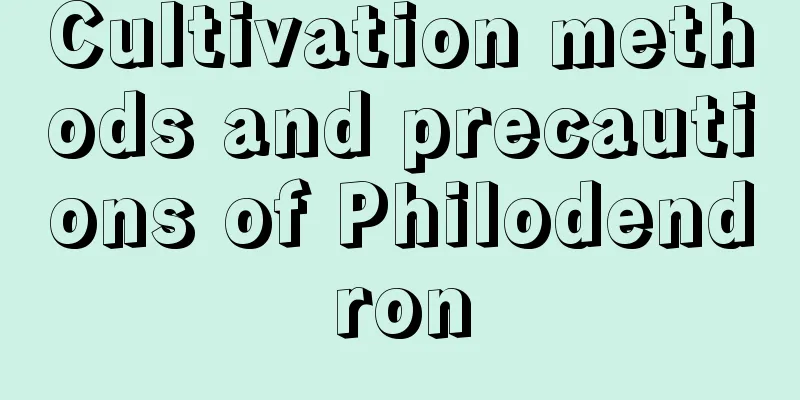When is the best time to sow cucumbers?

|
Cucumber is a common vegetable that is grown by many people. The planting site for cucumbers should be selected from plots where melon plants have not been planted in the past two years. The soil pH value should be maintained in the slightly acidic to neutral range of 6.5 to 7.5 to ensure good drainage and irrigation conditions. At the same time, the soil should be rich in nutrients. Let’s take a look at the best time to sow cucumbers. When is the best time to sow cucumbers? The suitable planting time for cucumbers is usually from January to March or from June to August, but the specific planting time will vary depending on the variety and geographical location. The timing of sowing also needs to be combined with local climatic conditions, especially temperature. Cucumbers are planted between June and August. It is recommended to sow them 70 days before the frost to ensure that the daytime temperature is 25 degrees Celsius, the nighttime temperature is 16 degrees Celsius, and the soil temperature remains around 22 degrees Celsius. Such temperature conditions help improve the survival rate of cucumbers. Cucumber planting precautions Application of base fertilizer: Cucumbers have high requirements for soil nutrients. The ideal soil should be rich in organic matter, well-drained and breathable, with a pH value between 5.5 and 7.2. Since it is difficult for land where cucumbers are grown all year round to meet these conditions, it is crucial to apply sufficient base fertilizer. Avoid excessive use of chemical fertilizers as this may cause soil compaction and affect root development. It is recommended to use 3,000 to 5,000 kg of decomposed farmyard manure, as well as 50 kg of compound fertilizer and 25 to 30 kg of superphosphate to promote vigorous growth of cucumbers. Variety selection and sowing: Choose cucumber varieties that are disease-resistant, cold-resistant, and have good commercial value, such as Zhongnong No. 12, Bomei No. 4, etc. Seed treatment includes sun-drying for 1 to 2 days for activation, soaking in warm water for 10 minutes for disinfection, and further disinfection with formalin solution. After soaking the seeds in clean water for 3 to 4 hours, they can be sown when 80% of them are white. Transplant the seedlings when they grow to 12 to 15 cm. Pay attention to land preparation and ridge making, and maintain appropriate row and plant spacing to facilitate cucumber growth. Trellising and pruning: In the early stages of cucumber growth, trellises should be set up when the cucumber has 4 to 5 leaves. For greenhouse cultivation, you can use a hanging rope, while for open-air cultivation, you can use an X-shaped or herringbone trellis. When pruning, remove side branches in time to avoid nutrient diversion and affect the growth of the main vine. When the cucumbers have 10 to 13 leaves, prune them and keep the cucumbers appropriately. Pruning also includes cutting leaves and removing beards to promote rational distribution of nutrients. When removing old leaves, you should do it from top to bottom, leaving 10 to 13 functional leaves. Pruning and cutting should be done on sunny days to avoid the invasion of pathogens on rainy days. Reasonable management: During the growth of cucumbers, old leaves should be pruned regularly and tendrils should be removed to reduce nutrient consumption. Pruning and cutting should be done in the morning on a sunny day with good ventilation to facilitate wound healing. Through these management measures, high yield and high quality of cucumbers can be ensured. The above is an introduction to the time and key points of cucumber planting. In fact, there are many aspects of cucumber planting that require attention, and specific reference is also needed based on actual conditions.
|
>>: How to water and fertilize lucky bamboo grown in soil
Recommend
If you don't pay attention to these three pitfalls when growing flowers in spring, your flowers will die sooner or later
Don't leave the room too early Some flower lo...
How to grow Kalanchoe so that it blooms continuously
Kalanchoe is a common ornamental plant. It has th...
Cultivation methods and maintenance matters of old honeysuckle piles
How to grow honeysuckle into an old pile The old ...
What can't be eaten with bayberry?
1. Cucumber Bayberry is rich in vitamin C and var...
The efficacy and function of centipede grass
1. Detoxification Centipede grass has a strong ef...
What kind of flowerpot looks good with evergreen
What flowerpot looks good with evergreen Dieffenb...
How to promote the flowering of Monstera in northern regions
Growth habits of Monstera Monstera is native to M...
Breeding methods and precautions of Dutch iron
1. Soil It is best to use slightly acidic, loose ...
Taboos of growing garlic vines in winter
1. Do not place in a cold place Garlic vine grows...
The efficacy and edible methods of Cistanche deserticola
1. The efficacy and effects of Cistanche desertic...
How to propagate Gelsemium elegans
Basic form and characteristics It belongs to the ...
Difference between orchid and orchid
1. Leaf Difference The leaves of orchid are oblon...
The Flower Language and Legend of Phalaenopsis
1. Flower Language The language of this flower is...
Can hydroponic daffodils see sunlight? Other maintenance methods for daffodils
1. Can you see the sun? Hydroponic daffodils can ...
When does passion fruit bear fruit and when does it mature?
1. Result Time Generally, passion fruit is plante...









